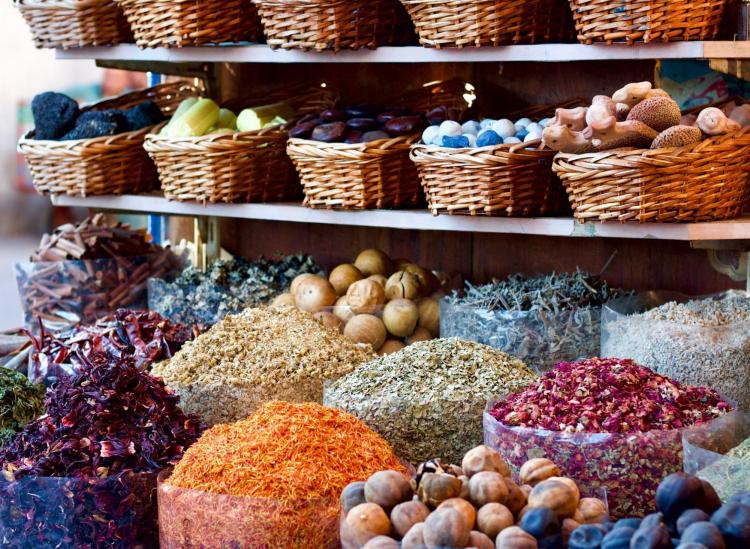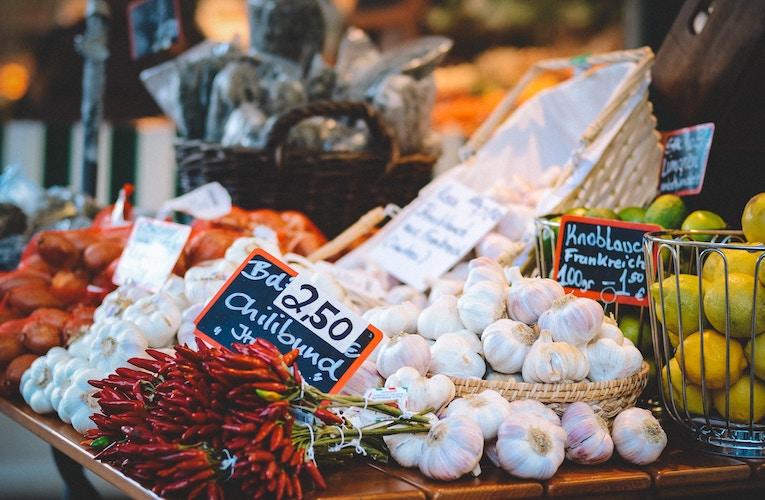Here’s The Deal With Bringing Food Through Customs

Unsplash/Nikhita Singhal
Recently, a woman was fined $500 for bringing an in-flight snack through customs. That’s half a grand for an apple. And honestly, we’re shook. It’s an apple — not stolen treasure.
But even though TSA famously lets you bring most foods through security, there are some weird rules about international travel that make snacking a little trickier.
Here’s what went down. Crystal Tadlock was flying Delta from Paris to Denver, with a layover in Minneapolis. She received the apple on the Paris-to-Minneapolis flight but wanted to save the fruit for the last leg of her journey from Minneapolis to Denver. Tadlock put it in a plastic bag and headed to customs, where a border agent searched her luggage, found the apple and fined her $500 — even after she offered to throw it out or eat it on the spot. Wild, right?
Admittedly, Tadlock had some bad luck in both being selected for a random search and encountering a particularly strict border guard. We all know those are out there. We’ve definitely run into issues with a drop or two left in a water bottle. But here’s what you can do to make sure your complimentary apples don’t turn into hundreds of dollars in fines.
The Basics Of Customs
When you enter the United States, you have to go through customs. That’s run by U.S. Customs and Border Protection (CBP). You’re required to fill out a form that explains where you traveled, on which flight you flew, and what you’re bringing back with you. It’s as simple as checking a box, “yes” or “no,” to whether you have snails in your suitcase. Most of the big U.S. airports offer automatic passport control machines through which you can answer the same questions.

Unsplash/Mohammad Saifullah
Food And Plants
There are rules about what can come into the country to make sure that no weird invasive species or diseases come with your culinary souvenir. There are restrictions on fruits, vegetables and meat and animal products. The easiest solution is to limit your purchases abroad to foods you’ll eat while you’re there and only bring unperishable goods home.
If you do want to bring a special meat or fruit into the country — generally anything that would make a nice charcuterie spread — it’s not impossible, but it has to be inspected by a CBP agriculture specialist.
The CBP does have a list of things that are generally okay to pack in your international luggage. It includes roasted coffee beans, cookies, truffles and canned sauces (within the allowed amount of liquids). However, since rules change often, it’s important to declare your stuff on your customs form.
What To Declare
Let’s say you have an apple that you are intentionally bringing from Paris to Denver. It’s a special apple that you can’t get in the U.S. (or, more realistically, a delightfully delicious looking mango you got from somewhere tropical). You’d check “yes” on the customs form to the statement, “I am bringing fruits, vegetables, plants, seeds, food, insects.”
There’s also a section on the back of the form where you “declare” anything that might be restricted. So you’d write “apple.” Then, a CBP agent would see the apple listed on your form and decide whether or not you can bring that apple into the country. Your apple could still be confiscated, but it’s better than leaving it off the form. If you tried to hide your fruit, you could lose the apple and have to pay a giant fine.
In the case of the $500 apple, we’re not quite sure if it falls into the category of foreign produce. CBP hasn’t made a statement on this particular case. But moral of the story: Watch out for those Minneapolis customs officials — they’re not so Minnesota nice. Play by the rules, fill out your customs form accurately and eat your snacks inside the plane.
RELATED
Here’s Everything You Needed To Know About Border Control
How To Decide If TSA Pre-Check Or Global Entry Is Right For You
Here’s What Food You Can And Can’t Bring On A Plane











